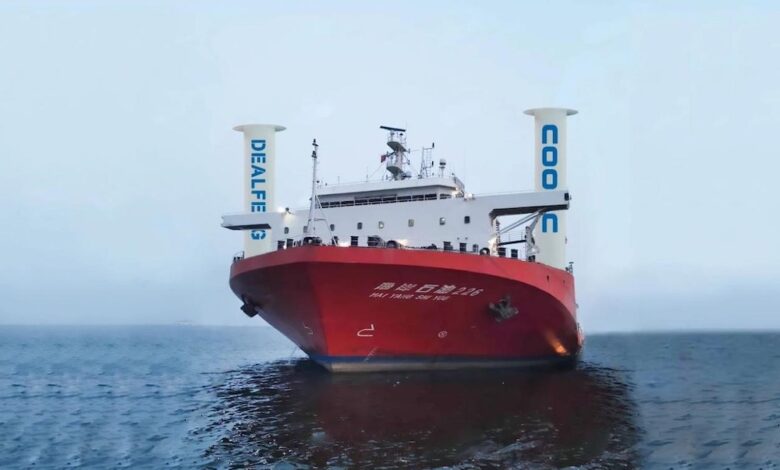Chinese rotor sail installations progress

A Chinese rotor sail solution has been installed on a pair of ships, the latest in a fast growing array of wind propulsion options for shipowners and charterers to consider.
Dealfeng New Energy Technology’s rotor sails have been installed on a 5,000 dwt ship belonging to local owner Haiyue. The 16 m high sails are made of lightweight and strong composite material. With a fully automatic Dealfeng control system, they generate forward thrust as the wind causes pressure difference around the rotating rotor while a vessel is sailing with Dealfeng claiming they can deliver a reduction of around 8% in terms of fuel and greenhouse gas emissions.
Additionally, following the signing of a retrofitting contract with China Offshore Oil Engineering Co (COOEC), Dealfeng has installed two sets of 18m high rotor sails on a 25,000 dwt deck carrier (pictured).
Dealfeng’s range of Flettner rotor sails range in size from three to 24 m in height with a pair of its largest sails being readied for installation on a bulk carrier soon.
Rotor sails are gaining popularity. Currently Finland’s Norsepower and the UK’s Anemoi Marine Technologies lead the market for this type of propulsion, manufacturing spinning cylinders that use the Magnus effect to harness wind power to thrust a ship. CSSC Shanghai Marine Energy Saving Technology (CMES-Tech) became the first Chinese company to install domestically built rotor sails earlier this year.
